Nicotine Pouches vs Vaping: A Strategic Product Comparison for Brands and White Label Buyers
The nicotine industry is undergoing a transformation, with consumers and businesses alike seeking cleaner, safer, and more versatile delivery systems. Among the frontrunners are nicotine pouches and vaping devices—two distinctly different formats, each with its own market momentum and consumer base. This report compares both, explores leading brands and manufacturing ecosystems, and offers guidance on choosing the right white label or OEM partner for brand expansion.
As demand for tobacco alternatives continues to rise, brands and retailers are presented with an increasingly common dilemma: nicotine pouches or vaping—where should we invest? This article explores the pros and cons of each, examines market leaders like Zyn and JUUL, and outlines how companies can leverage white label products and custom nicotine manufacturing to scale rapidly while maintaining product integrity.
Understanding Nicotine Pouches and Vaping
Nicotine pouches are smoke-free, spit-free products that deliver nicotine through oral absorption. These discreet pouches contain purified nicotine, usually synthetic or extracted, combined with plant-based fillers and flavoring agents.
In contrast, vaping involves inhaling vaporized liquid nicotine using an electronic device. These liquids, often sourced from a liquid nicotine wholesaler, are available in various flavors and strengths and are heated by a coil to produce vapor.
Both products offer nicotine delivery without combustion, but their mechanisms, usage styles, and user bases differ significantly.
Mainstream Brands Dominating the Market
In the pouch category, Zyn by Swedish Match leads the market with an extensive flavor lineup and consistent quality, making it a benchmark for nicotine pouch innovation.
For vaping, JUUL Labs continues to be a household name, offering sleek hardware and a broad selection of pre-filled pods. Its popularity is driven by product design, high nicotine options, and wide availability.
Other notable entries include VELO, On!, and Rogue for pouches, and SMOK or Vuse for vape devices.
Comparing Nicotine Pouches vs Vaping: Pros and Cons
| Feature | Nicotine Pouches | Vaping Devices |
|---|---|---|
| Discretion | Highly discreet, odorless, no vapor | Visible vapor clouds; requires device |
| Ease of Use | Ready-to-use, no charging or setup | Requires battery, coil, e-liquid |
| Flavor Options | More limited (mint, citrus, berry) | Vast range—fruit, desserts, menthol, tobacco |
| Portability | Lightweight, no leakage risk | Device and pod/liquid management needed |
| Perceived Safety | No inhalation, lower public health concern | Concerns around overheating, lung exposure |
Ultimately, nicotine pouches are favored for simplicity and discretion, while vaping offers a sensory-rich, customizable experience that appeals to a younger and more tech-inclined demographic.
Manufacturers Behind the Products
Nicotine pouches are largely produced by Scandinavian companies like Swedish Match, known for pioneering snus and pouch technology. Their facilities ensure strict quality control and regulatory compliance for markets across Europe and North America.
On the vaping side, JUUL Labs and RELX are major players, supported by a robust network of nicotine manufacturers who produce custom liquids and hardware solutions for brands.
For private label projects, it’s essential to align with manufacturers that specialize in your chosen format and can scale production while adhering to local regulations.
White Label Solutions: Benefits and Business Applications
White label nicotine products empower companies to launch their own branded solutions without investing in R&D or facility infrastructure. This model is ideal for:
-
Retailers expanding into nicotine alternatives
-
Lifestyle brands entering wellness or focus-enhancing categories
-
Distributors seeking differentiated SKUs
-
Online platforms building private label e-commerce brands
For example, WYN, a leading nicotine patch manufacturer, provides full-service white labeling—including formulation, packaging, and compliance support—helping partners build unique market-ready solutions under their own brand.
Choosing the Right Customization Partner
Finding a reliable nicotine manufacturing partner is about more than capacity—it’s about shared vision, technical capabilities, and service.
Key factors to evaluate include:
-
Track Record: Experience in regulated markets
-
Quality Assurance: GMP-certified facilities and lab testing
-
Customization Options: Flavor, strength, pouch size, packaging design
-
Support & Speed: R&D collaboration, sampling, flexible MOQs
A strong nicotine factory should feel like a strategic partner—not just a supplier. And that’s where Echi excels.
Spotlight on the Echi Brand
Echi, a division of Boton Group, stands out for its commitment to innovation and compliance in the nicotine space. As a seasoned liquid nicotine wholesaler and white label partner, Echi offers:
-
High-quality nicotine pouches and oral delivery systems
-
OEM solutions tailored for international markets
-
Flexible formulations (including synthetic nicotine, CBD, caffeine pouches)
-
End-to-end service, from flavor R&D to custom packaging
Their deep expertise and vertically integrated supply chain make them a preferred partner for brands looking to scale quickly without compromising on quality or safety.
Conclusion: Strategic Recommendations
For brands evaluating nicotine pouches vs vaping, the decision should align with your audience’s lifestyle, your operational strengths, and long-term positioning.
-
If discretion, stability, and minimal maintenance are priorities, nicotine pouches offer a compelling, compliant solution.
-
If flavor diversity, tech engagement, and sensory customization are vital, vaping might be the better fit—though regulatory scrutiny is increasing globally.
Whether entering the market or expanding product lines, white label solutions offer a fast, efficient way to grow. Brands like Echi provide the manufacturing precision, innovation support, and compliance insight needed to thrive in today’s competitive nicotine industry.
Explore further resources:



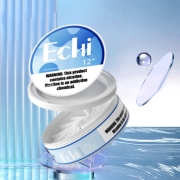
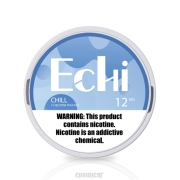
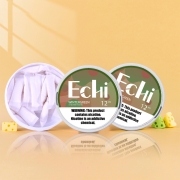
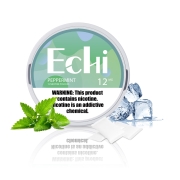
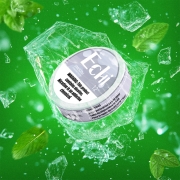


Leave a Reply
Want to join the discussion?Feel free to contribute!